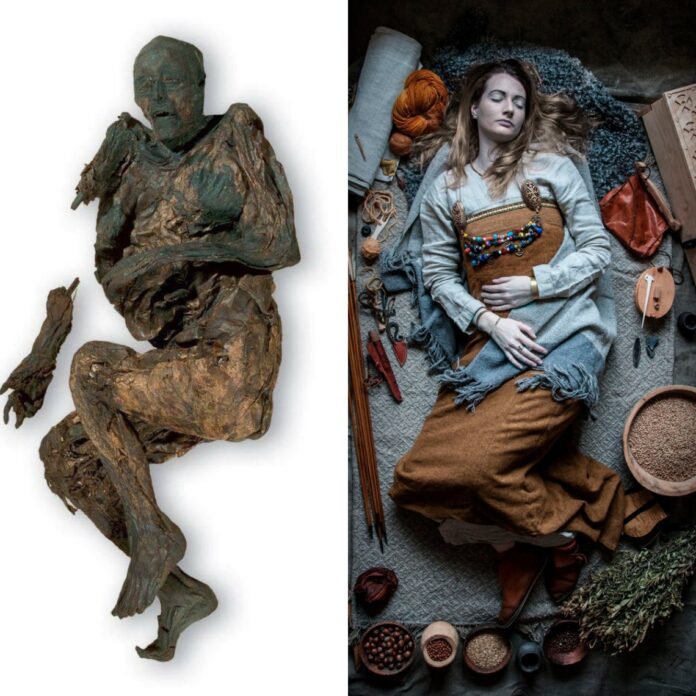The Huldremose woman, 2nd century BC. Found in a peat turf at Huldremose in Denmark.
In 1879, the discovery of the Huldremose Woman in a peat bog at Huldremose, Denmark, unveiled a remarkable window into Iron Age life. Preserved in the acidic environment of the bog, her remains were remarkably intact, offering valuable insights into ancient European rituals, clothing, and lifestyles.

The Find
A local farmer made the astounding discovery while cutting peat in the bog. The woman’s body, dating back to the 2nd century BC, was found dressed in a woolen skirt, a scarf, and two skin capes. The peat’s unique conditions had preserved not only her body but also the textiles she wore, providing a rare glimpse into Iron Age fashion and textile craftsmanship.
Forensic Analysis
Forensic examinations revealed that the Huldremose Woman was likely in her forties at the time of her death—considered elderly for that period. Her hair, styled in an intricate bun, remained intact, showcasing the grooming practices of the era. Marks on her body suggested she might have been subjected to violent rituals, hinting at the possibility of her being a sacrificial victim.
Cultural Context
The discovery of the Huldremose Woman sheds light on the cultural and religious practices of Iron Age societies in Northern Europe. Bog bodies like hers are believed to be linked to ritual sacrifices, perhaps offered to deities or as part of burial customs intended to honor the deceased or appease the gods. The garments she wore indicate a complex social structure with skilled artisans capable of producing intricate textiles.
Scientific Contributions
Her well-preserved state has allowed scientists to study the materials and methods used in Iron Age clothing. Analysis of the woolen and skin garments has provided insights into the types of sheep breeds and tanning processes used by Iron Age communities. This knowledge contributes to a broader understanding of the technological advancements and daily lives of people living over two millennia ago.
Legacy
The Huldremose Woman’s remains are now housed in the National Museum of Denmark, where they continue to be a subject of fascination for both researchers and the public. Her story highlights the significance of peat bogs as natural preservers of history, offering invaluable information about ancient civilizations that would otherwise remain unknown.
Conclusion
The Huldremose Woman is not just an archaeological find; she is a silent witness to a bygone era. Her preserved body tells a story of life, death, and ritual in Iron Age Denmark, providing a tangible connection to our distant past. Through her, we gain a deeper appreciation for the complexities of ancient societies and the enduring human quest to understand our ancestors.




